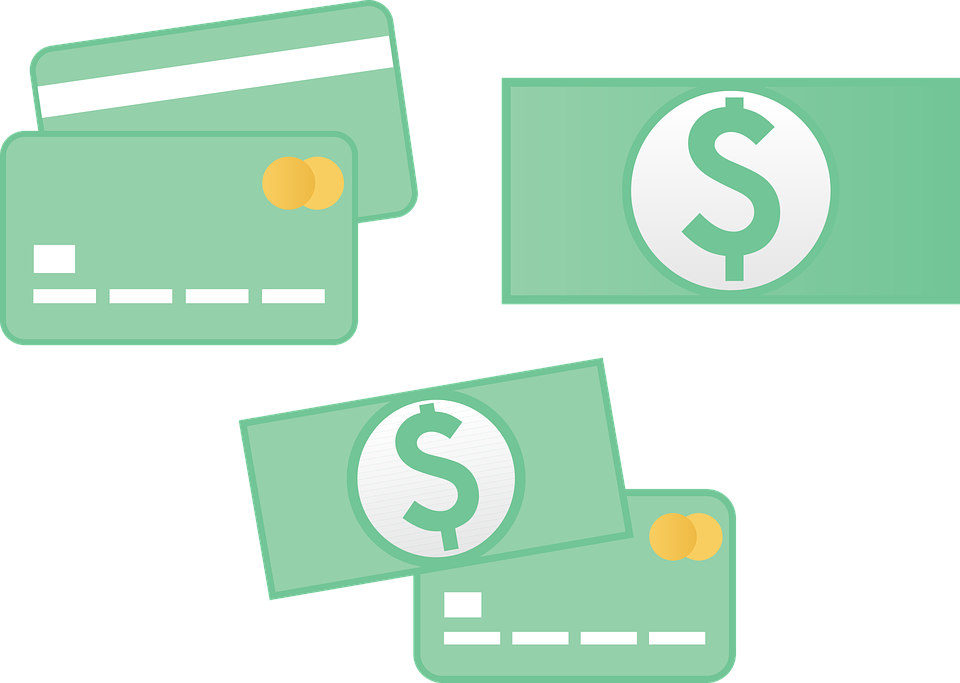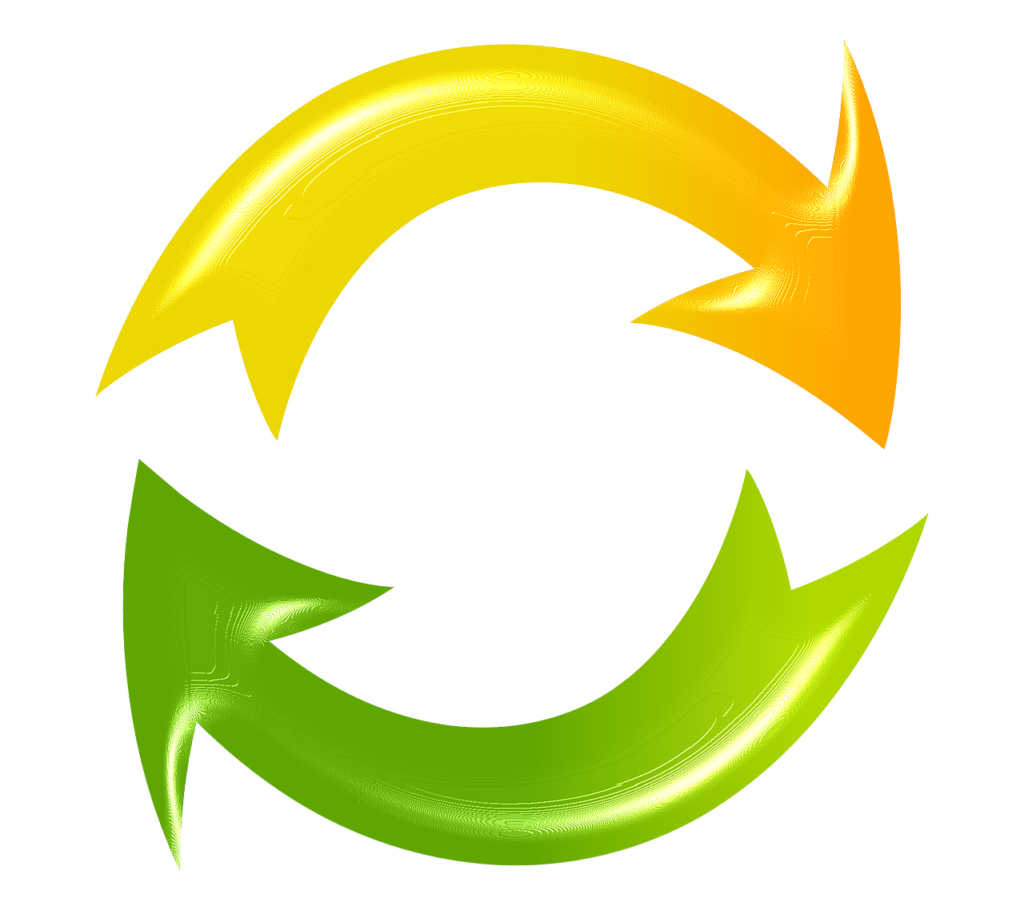
Contents
- Efficient vs. Inefficient Debt
- Retiring Debt Wisely – The Big Picture
- Start with Prayer!
- Recognize Your Debt’s Traits
- What Caused the Debt?
- How Large is the Debt?
- How is Debt Impacting Cash Flow?
- Pursue Debt Retirement Priorities
- Prioritize Generosity
- Prioritize Cash Flow
- Prioritize Net Worth
- Retiring Debt Wisely – The Mechanics
- Evaluate Spending
- Make Big Decisions
- Use the Debt Snowball
- Approach Transfers with Caution
- Avoiding Debt Relapse
- Address Causes of Debt
- Track and Plan Spending
- Build Savings
- Use Credit Cards Wisely
- Commit Your Finances to the Lord
Debt is pervasive in American culture – inside the church as well as outside. Many believers are struggling under a heavy debt load from multiple sources. Payments on credit cards and other debt consume significant resources, leaving little margin for other needed spending. So that spending is done on credit cards, and the debt cycle continues in a downward spiral.
The borrower is slave to the lender.
(Proverbs 22:7)
Anyone who is struggling with debt feels the truth of Proverbs 22:7. The lack of freedom brought on by debt can lead us to desperation and cause us to make further unwise decisions while failing to effectively address the issues that lead to debt.
If this is where you find yourself, start by taking a breath and recognizing God as our sovereign Provider. Nothing about our financial situations has taken God by surprise and nothing is beyond His ability to provide for us.
In this article, we’ll focus on strategies for freeing ourselves from the bondage of debt. But let’s start with a key truth: Debt is not evil.

Efficient vs. Inefficient Debt
Scripture nowhere condemns debt as sin. In fact, the Bible most often pictures debt as the result of poverty. Debt is dangerous and it can rob us of freedom – but it’s not sin. It’s possible that some of the causes of debt may be sinful – but more on that later.
Debt is primarily efficient or inefficient. Similarly, it can be wise or unwise.
Efficient debt is leveraged for positive purposes and/or on items that increase in value. Examples could include:
- A mortgage on a home that increases in value over time
- An education loan that opens the doors for job and career opportunities
- A business loan that helps to create jobs or provides housing for the needy, etc.
Any of these debts could be wise or unwise. A mortgage on a reasonably sized house may be a wise investment; a mortgage on a house much larger than needed may be unwise.
Inefficient debt is incurred on items that decrease in value. Examples might include:
- Anything purchased on a credit card or through a personal loan, etc.
- A vehicle purchased with a car loan
Again, these debts might be wise or unwise. A car loan on a reliable used car needed to get to work and earn an income might be a wise debt – though it’s still inefficient. A loan for twice the amount to get a new car is probably unwise. Generally, any consumer goods purchased on a credit card would be unwise debt (unless the card is paid off every month).
In this article, we’ll focus on retiring inefficient debt. This debt causes most of our financial struggles and hinders our journey toward financial freedom. Efficient debt – such as a mortgage or business loan – doesn’t necessarily need to be retired early unless there is a significant cash flow issue (which we’ll discuss below).
Retiring Debt Wisely – The Big Picture

Most programs for getting out of debt stress the mechanics – methodologies like the debt snowball. While the methods are important, they’re not the most effective place to start. This is because debt is not usually the problem – it’s a symptom of the problem. The symptom needs to be addressed, but if we fail to address the root causes of our debt, the debt will recur even if we’re able to retire it initially.
Additionally, retiring debt is only part of the financial picture. While it often needs to be emphasized over other spending opportunities, retiring debt should be part of a prioritized financial plan. The first goal of debt retirement is to get to a place of financial stability – where our debt payments aren’t eating up so much of our income that not enough is left to live on.
Start with Prayer!
If any of you lacks wisdom, you should ask God, who gives generously to all without finding fault, and it will be given to you.
James 1:5
Significant debt doesn’t occur overnight (except in emergency cases), and it’s not going to disappear overnight. A disciplined approach to retiring debt requires perseverance, patience, and wisdom – characteristics we need to depend on God for. And it requires faith – faith to trust in God for provision and for wisdom.
As we seek to understand and address our debt, the Holy Spirit may convict us in areas of sin. Debt itself is not sin, but it’s often caused by materialism, selfishness, and carelessness with the Master’s resources – all of which are sin. We need to be open to the Spirit’s conviction in these areas and to confession and repentance in response.
Recognize Your Debt’s Traits
Three primary questions can help us to understand our debt:
- What caused the debt?
- How large is the debt?
- How is debt impacting our current cash flow?
What caused the debt?
The first question to ask is, How did we get here? That is, why are we in debt? What spending resulted in this debt?
If we haven’t been tracking our spending, this may be a difficult question to answer. If this is the case, beginning to track spending daily is the first step toward understanding our debt.
Most credit card debt comes from consumer spending, and much of this spending stems from emotional need. We need to feel that we fit in, so we spend to purchase things that our friends, family, and neighbors have. We want to feel happy, so we purchase new clothes or something else that makes us feel better about ourselves. Medicating emotional need is one of the chief causes of consumer debt. And if this is the case, the place to start is with acknowledging the emotions underlying our spending and effectively addressing those emotions.
Medical emergencies may lead to debt. If this is the case, there may not be a behavioral change needed. But the answer might lie in accumulating some savings, reviewing our medical insurance, etc.
A single large purchase, such as a house or car, may cause a significant debt load. If this is the case, we may need to revisit that purchase decision. Does the asset need to be sold? Do we need to downsize a house or car?
How large is the debt?
Another key question is, How large is the debt? The answer to this question should impact decisions about how to address the overall debt. For example, if the debt load is very significant compared to cash flow (the next question), then it’s possible that minor tweaks here and there won’t resolve the problem. In this case, it may be necessary to sell a large asset (even a house) if this will free up significant funds to address the debt immediately. If the debt can be retired within the current cash flow situation, then more drastic measures may not be needed.
How is debt impacting cash flow?
We mentioned earlier that retiring debt should be part of a prioritized Spending Plan. But those priorities also need to account for cash flow. If there’s a negative or neutral cash flow, then retiring debt becomes an immediate need in order to free up monthly cash. On the other hand, if cash flow is positive overall, then debt retirement can be prioritized against other key spending decisions.
If we understand the answers to these questions, we’re better prepared to address the debt. Understanding the causes of debt helps us to deal with those causes directly rather than continually struggling with the symptom of debt. This improves our chances of permanently freeing ourselves from the bondage of debt. Understanding the size of the debt and how that debt impacts cash flow helps us make decisions about prioritizing debt retirement against other key financial goals and about any large changes that might be needed.
The key to all of this is tracking spending. If we’re not tracking our spending well, then we won’t be able to get a handle on cash flow. We might know if our balances are going up or down, but we won’t know why – and thus won’t be able to make impactful spending decisions. If we don’t know what our debt payments actually are, then we don’t have enough information to see how they’re impacting our overall financial situation.
If this is where you find yourself, make a commitment today to begin tracking spending faithfully and daily. For help with this, see our related article, How to Track and Categorize Spending.
Pursue Debt Retirement Priorities
Once we’ve understood the characteristics of our debt – causes, size, impact on cash flow, we’re in a position to determine how debt retirement fits in to our overall financial picture. Again, we’re talking primarily about consumer debt – but there may be scenarios in which even efficient debt (like a mortgage) needs to be erased in order to establish financial stability.
Elsewhere, we’ve identified three indicators of faithful stewardship. These indicators – generosity, cash flow, and net worth – also provide priorities for our debt retirement process.
Prioritize Generosity
“Do not store up for yourselves treasures on earth, where moths and rust destroy, and where thieves break in and steal. But store up for yourselves treasures in heaven, where moths and rust do not destroy, and where thieves do not break in and steal. For where your treasure is, there your heart will be also.”
Matthew 6:19-21
Jesus taught that our hearts follow our treasures. As a result, generosity is not an option for the believer. This is not to say that someone who is deeply in debt should be giving at the same rate as someone who has excess. But even difficult financial times shouldn’t keep us from giving. The example of the Macedonian churches – giving generously in spite of their own poverty – should guide us (2 Corinthians 8:1-5).
Exactly how much to give in any circumstance should be a matter of seeking God’s guidance through the Scriptures and through prayer. The historical Biblical benchmark of a tithe may not be possible in dire financial situations; but a plan to make progress toward that benchmark should be part of our priorities, even as we retire debt.
Often, this will require a shift in our spending priorities. Most of us didn’t get into debt by giving too much; in fact, in the process of getting into debt, we probably limited our giving due to the increasing payments. Re-prioritizing generosity in light of Biblical guidelines is a way of giving our hearts to God, and is a key step in getting out of debt. We need to remember that God is our provider and put our faith in Him, not in our financial plans or spending decisions.
Prioritize Cash Flow
One of the ways that debt binds us is in the area of cash flow. Credit card payments eat up so much of our income that little is left over for giving, saving, or other spending. And as a result, even minor unexpected expenses end up going on the credit cards, exacerbating the debt problem.
Three key steps can help to improve the cash flow situation:
- Establish an Emergency Savings Fund.
- Reduce discretionary spending.
- Retire debts starting with the lowest balance first.
The first priority is to establish an emergency savings fund with around 2% of annual gross income. This is typically a number that can handle most unexpected expenses but that is also relatively quick to attain. Think of this part as a sprint at the beginning of the debt retirement marathon. Get there quickly – a month or two at most. This may require cutting back in some areas that may not be sustainable over the long term: putting off purchases of needed items for a month or two; pausing or cancelling subscriptions; eating out of the pantry and dialing back on grocery expenses, etc. The point is to establish this fund quickly.
And when an emergency arises, use the fund! That’s why we establish an Emergency Savings fund – for use in an emergency. Rather than allowing this to discourage you, take heart that the wisdom of establishing that fund has been proven. And get back to that 2% number quickly!
In a debt situation, reducing or postponing spending is a requirement in order to prioritize cash flow. We’ll highlight some strategies for getting quick wins in this area below.
Finally, retiring debt is essential to shoring up our cash flow. This process should begin with the lowest balances first, in order to eliminate payments and free up cash. We’ll talk more about this in the Mechanics section.
Prioritize Net Worth
The next priority after generosity and cash flow is net worth. Net worth is a simple calculation of subtracting what you owe (debts) from what you own (assets). Over time, faithful stewards increase their net worth through wise management of the Master’s resources (see the Parable of the Talents, Matthew 25:14-30).
Since net worth involves both assets and debts, there are two ways to increase our net worth: increase assets (through saving) and decrease debt. Net worth is a longer-term consideration, whereas generosity and cash flow need to be addressed in the short term.
Once generosity is established and cash flow is stabilized, it’s important to determine how best to increase net worth. Retiring debt is a key aspect of this, but certain savings vehicles are so advantageous that they need to be prioritized along with retiring debt. Chief among these is the retirement fund with an employer match. The matching aspect of this type of vehicle provides immediate return on investment and is one of the most effective contributors to net worth.
Most other investments do not produce a return large enough to offset the typical credit card interest rate, so after maximizing the employer match, the next step toward increased net worth is to retire all credit card debt.
Keep in mind: Net worth is not our worth in God’s sight! God has set our worth at the supremely high level of the life of His Son, and our balance sheet has no impact on that.

Retiring Debt Wisely – The Mechanics
As we mentioned above, understanding the debt environment (how we got there, size of debt, cash flow) is the first step toward retiring debt. Without this first step, we might make progress only to find that the debt recurs because we haven’t addressed the root cause (like emotional spending). But as we address the root cause, following the right mechanics can help us retire debt more successfully.
“If you always do what you’ve always done, you’ll always get what you always got.”
Retiring debt will require some changes. We’ll suggest some important steps and decisions, but the exact changes needed will depend on the circumstances. The process starts with a mindset of willingness to make some changes and trust in God to direct decisions and to empower change.

Evaluate Spending
The first step is to evaluate our current spending. As we mentioned above, tracking our spending provides us with the information we need for this step; without tracking, most of us underestimate what we’re spending, especially in discretionary categories.
The quickest wins can be had in discretionary variable expenses. These include entertainment and some household categories, like eating out, movies, etc. Discretionary fixed expenses, like subscriptions for apps and streaming services, may provide another quick win. Reducing or eliminating these even for a period of time can help us head in the right direction with regard to cash flow and establishing margin.
Non-discretionary variable expenses like clothes and other household expenses can’t be eliminated (hence the “non-discretionary” label), but often they can be postponed or reduced for a time to help get started.
For more on evaluating expenses and places to look, see our related article, The Spending Plan: Managing Trade-offs.

Make Big Decisions
In some situations, big decisions and impactful changes are needed. The person who has a negative cash flow of a thousand dollars a month isn’t going to be able to make that up through a handful of tweaks to the spending plan.
Most often, a scenario like this includes having overbought on a house or a car. And the solution is going to be to eliminate that expense. This isn’t an easy decision and usually can’t be executed quickly – so it’s not the first place to look. But temporarily downsizing or finding an alternative living situation for a time may be the most effective way to long-term financial stability.
Decisions like this require wisdom and courage – meaning, they require prayer. They also call for a heart willing to follow where God leads, even if that path isn’t the most comfortable one.

Use the Debt Snowball
The debt snowball is a widely used and effective method for approaching debt from multiple sources, especially credit cards. The steps are basically these:
- List all consumer debts in order of lowest balance to highest. (For this purpose, consider credit cards, personal loans and payment plans (eg, medical), and potentially car loans.)
- Make minimum monthly payments on all but one of the debts.
- Determine an amount that can be budgeted for accelerated debt retirement (starting with the spending plan and using money freed up by adjusting expenses)
- Target the lowest balance debt and add the accelerated debt retirement amount to this payment every month until the account is paid off.
- Repeat with the new lowest-balance debt.
Although this isn’t technically the most efficient way to retire debt (that would be to begin with the debt with the highest interest rate), it has been widely shown to be the most effective. There are a couple of reasons for this:
- Attacking the lowest balance first leads to relatively quick wins, which provides a huge psychological boost and encouragement to stick with the plan.
- Eliminating payments quickly is the fastest way to free up margin. This margin can then be applied to the next-lowest balance debt, or used to re-fund an Emergency Savings fund if needed.
- Eliminating payments reduces the stress and workload each month and reduces the chances of missing a payment or paying late. Both of these have a negative impact on the credit score.

Approach Transfers with Caution
One fairly common practice for people struggling with a lot of consumer debt – especially with multiple credit cards – is to transfer the balance of several credit cards to a new card with a lower introductory interest rate or to a debt consolidation loan. These options can provide a couple of benefits:
- Lower total monthly payments, which frees up margin in the Spending Plan;
- Lower overall interest rate – at least in the beginning.
Despite these benefits, a balance transfer should be approached with caution. Often, balance transfers only compound the debt problem. If we continue to use the old cards (which now have available credit), we’ll simply add more debt.
Before executing a balance transfer strategy, be sure to take the following steps:
- Address the root cause of the debt (as discussed above). If issues behind overspending are left unaddressed, a balance transfer will only result in additional debt.
- Create or update a realistic spending plan based on actual spending records. Compare current debt payments to what the new payment would be. Identify any margin created and plan what will be done with that margin. Do you want to increase generosity? To begin saving? To accelerate debt retirement? Don’t let the margin just disappear!
When executing a balance transfer:
- Understand whether the interest rate is permanent or introductory. If it’s introductory, pay special attention to two things:
- The permanent interest rate. It might be higher than the rates on some of the cards you’re transferring.
- The permanent minimum payment. Be sure that you’ll be able to meet the new minimum payments.
- Close out all the credit cards whose balances you’re transferring. If you’re transferring all your balances, you may want to keep one card open. If you keep one card open, use it only for planned (budgeted) items and pay it off every month.
- Although it might be tempting to transfer the highest-interest balances, use the debt snowball methodology and transfer the lowest actual balances first. It’s more important to create margin by eliminating payments than it is to save on interest. By creating this margin, you’ll be able to pay down any remaining credit cards more quickly with accelerated payments.
Avoiding Debt Relapse

Having gotten out of debt – or having made significant progress in that direction – the last thing we want to have happen is to “relapse” back into a significant debt burden. Let’s review some key practices that can help.
Address causes of debt
If overspending to medicate emotions is the cause of debt, then addressing those emotions is critical to preventing a relapse. This might involve a community like a small group; implementing key spiritual practices such as meditating on Scripture and prayer; or even counseling. Determine what path is needed, and head down that path. If you find yourself lapsing back into emotional spending, enlist the help of a trusted friend or family member, and pray!
As we mentioned above, if a single large purchase is the cause of excessive debt, consider selling that asset (typically a house or car). A decision this large involves more than just finances – handle with prayer!
Track and plan spending
We’ve spoken about the need for a realistic Spending Plan based on actual spending patterns. This requires diligent tracking and disciplined evaluation of actual spending against planned spending, making adjustments to the plan as needed. Most people who get into serious consumer debt do not track or plan their spending; if they did, they’d know that they were heading in the wrong direction. Correcting course requires perseverance in this area. See the related articles below for more information.
Build savings
With consumer debt retired, there is now margin in the Spending Plan. The money that was going to debt payments can now go somewhere else. Two key areas that should be goals – as noted above – are growing in generosity and building net worth.
Beyond emergency savings, it’s important to build additional short-term and long-term savings. For more information on building savings, check out our related article, Biblical Wisdom on Saving.
Use Credit Cards wisely
Most of us get into debt through overspending on credit cards. If that’s you, then consider the following guidelines for credit card usage:
- Keep one or at most two credit cards. These should be general cards, not store-specific. Avoid store credit cards even if they offer a discount on purchases. Opening up these cards has a negative impact on credit score and increases the potential for getting into trouble with debt again.
- Use credit cards only for budgeted items. This, of course, requires planning and tracking spending (see above). If we stick within our spending plan, we’ll always be able to pay off the credit card because the plan guarantees that we have enough money for what we’re buying.
- Pay off the balance every month. This will avoid interest charges, improve the credit score, and keep you out of consumer debt!
Commit your finances to the Lord
Commit to the LORD whatever you do,
Proverbs 16:3
and he will establish your plans.
Finally (but most importantly), pray regularly over your finances!
- Start with thanksgiving (Philippians 4:6-7; 1 Thessalonians 5:16-18). Paul tells us that even as we bring our requests – before they’ve been answered – we should bring them with thanksgiving. This thanksgiving is based on trusting in God as our provider.
- Pray for wisdom to make good decisions on earning and spending.
- If you notice patterns of materialism or impulsive spending, confess these and ask God to strengthen you against temptation.
- Pray for God’s provision.
- If you’re married, pray for unity with your spouse as you grow in the area of stewardship.
The order of Proverbs 16:3 is important. It’s not “make your plans, then pray for the Lord to establish them.” It’s first, commit yourself to the Lord. Then allow him to guide your plans. Don’t settle for asking God to bless what you’re doing; do what he is blessing.
Though the righteous fall seven times, they rise again,
Proverbs 24:16
but the wicked stumble when calamity strikes.
Don’t be discouraged if results don’t come right away or if the journey resembles a roller-coaster ride at first. It doesn’t matter how many times we fall – God will pick us back up as we follow him. As much as we want to be faithful stewards for God, he wants this even more for us! God knows how stewardship affects our hearts and our walk with him, and he is always ready to forgive, ready to guide, ready to provide.